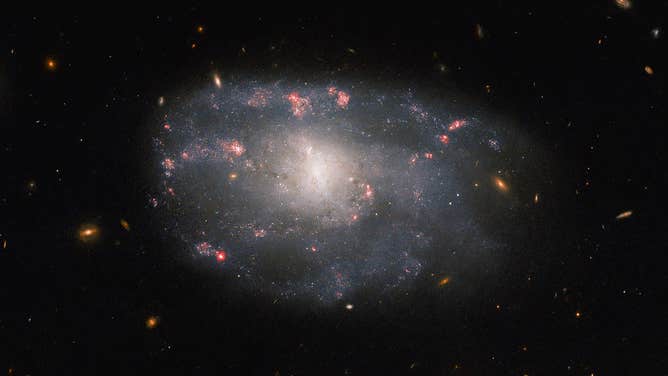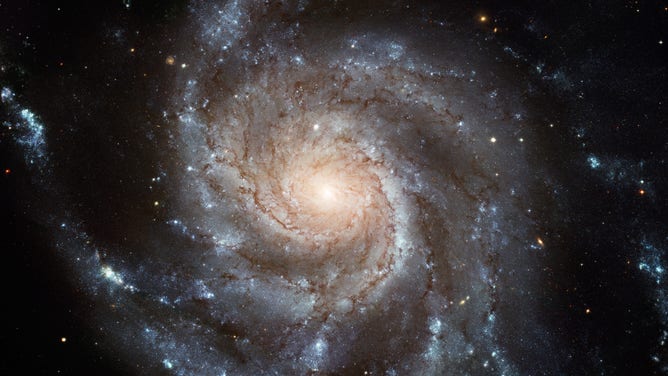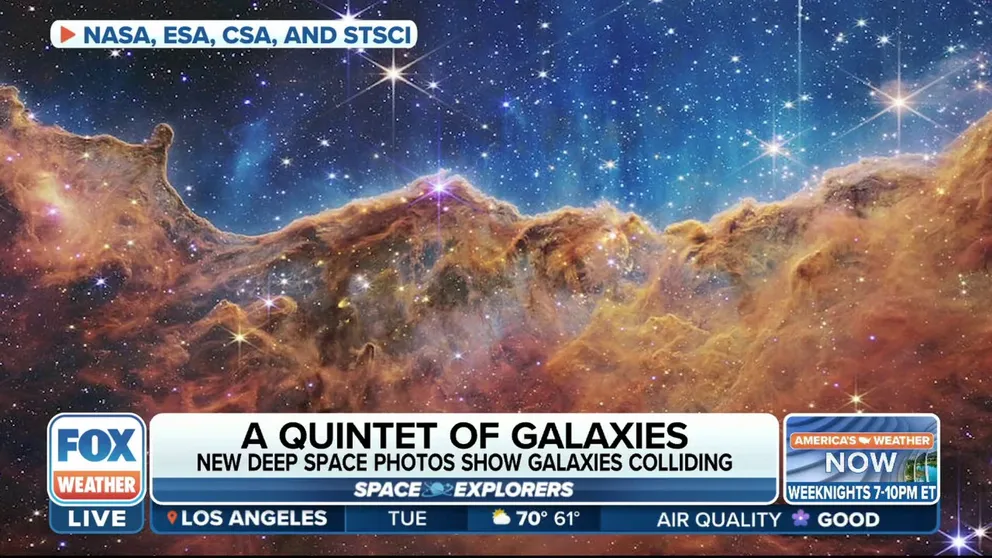Irregular spiraling galaxy spotted in newest image from Hubble Space Telescope
In the image captured by Hubble, the arms of NGC 5486 almost appear to sprout and bend back, similar to flower petals unfurling to face the sky.
'New realm of exploration': Full-color images from NASA telescope shows galaxies colliding
Stefanie Milam, Planetary Scientist at NASA's Goddard Space Flight Center, talks about the excitement of the first full-color images from the James Webb Space Telescope being revealed on Tuesday.
NASA released an image Friday of an irregular spiral galaxy located 110 million light-years away in the constellation Ursa Major.
Named NGC 5486, the galaxy is shown with a glowing core surrounded by lavender and cherry blossom pink clouds of gas and debris, punctuated by white dots of starlight.
NGC 5486 is classified as both a spiral and an irregular galaxy.

The irregular spiral galaxy NGC 5486. Released by NASA on March 10, 2023.
(ESA/Hubble and NASA / C. Kilpatrick / NASA)
The galaxy has arms extending from its glowing center and curved in a way that forms a mostly spiral shape. The arms, however, are indistinct and meandering, leading to the galaxy’s second classification as irregular.
IMAGES SHOW DISTANT BLACK HOLES ON A COSMIC COLLISION COURSE IN DWARF GALAXIES FAR, FAR AWAY
In contrast, nearby lies the spiral galaxy called the Pinwheel Galaxy. Much larger than NGC 5468 and nearly twice as wide as our own Milky Galaxy, the Pinwheel Galaxy has prominent, well-defined arms that form a distinct spiral.

The Pinwheel Galaxy. Released by NASA on October 19, 2017.
(Hubble Image: NASA, ESA, K. Kuntz (JHU), F. Bresolin (University of Hawaii), J. Trauger (Jet Propulsion Lab), J. Mould (NOAO), Y.-H. Chu (University of Illinois, Urbana) and STScI; CFHT Image: Canada-France-Hawaii Telescope/J.-C. Cuillandre/Coelum; NOAO Image: G. Jacoby, B. Bohannan, M. Hanna/NOAO/AURA/NSF / NASA)
From the image captured by the Hubble Space Telescope, the arms of NGC 5486 almost appear to sprout and bend back, similar to flower petals unfurling to face the sky.
Some of the gas and debris in the arms of NGC 5486 come from a supernova that occurred in 2004. According to NASA, astronomers have used Hubble’s Advanced Camera for Surveys to explore the aftermath of the supernova in hopes of learning more about the celestial events.
